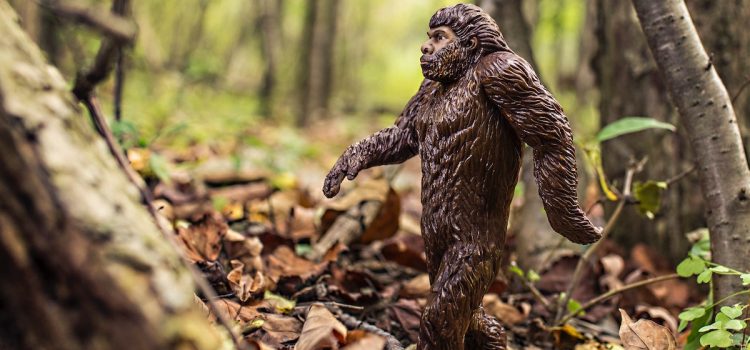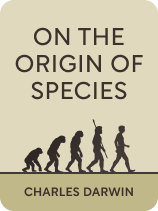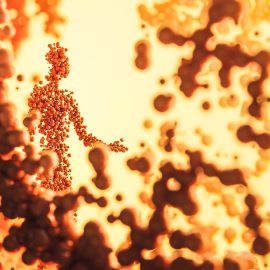

This article is an excerpt from the Shortform book guide to "On the Origin of Species" by Charles Darwin. Shortform has the world's best summaries and analyses of books you should be reading.
Like this article? Sign up for a free trial here.
Why aren’t there more transitional species? If Darwinian evolution is correct, wouldn’t we see it in progress?
Charles Darwin’s theory of evolution has always stirred up controversy. He took the opportunity in the final edition of On the Origin of Species, published in 1872, to respond to some of the objections raised by skeptics. One of these is that we should see transitional species.
Continue reading to learn how Darwin responded to this challenge.
The Problem of Transitional Species
Darwin’s critics argued that, if species evolved from other species, then there should be more transitional species alive or at least more evidence of them in the geological record. Darwin provides three rebuttals.
Rebuttal 1) Competition Destroys Transitional Species
Darwin argues that we don’t see many transitional species alive today because competition between species would select against them. Recall that scarcity of food, habitat, and other resources puts species in competition with each other. Those that have evolved the best adaptations outcompete those that are less adapted. Therefore, transitional species are likely to die out.
For example, let’s say there’s a fish that eats two kinds of food: algae and smaller fish. Some of the fish in this population develop a mutation that gives them teeth that can scrape algae off coral, which allows them to eat algae faster. Others develop long, sharp teeth that allow them to catch small fish better. The optimized algae eaters eat most of the available algae, while the optimized fish hunters catch most of the available small fish. Now there’s less to eat for the parent population, which is optimized for neither algae nor small fish. They’ll likely die off, leaving two new species of fish.
(Shortform note: Studies of ovenbirds in South America have confirmed that closely related “sister species” compete with each other by occupying similar niches. Researchers found that closely related species of ovenbirds that relied on similar food sources didn’t live in overlapping territories due to “competitive exclusion.” However, they found that once related species had evolved into distinctive ecological niches—some developed curved beaks for prying insects out of bamboo stems, for instance—then they no longer competed with each other and could share territory.)
Rebuttal 2) The Fossil Record Is Scarce
Darwin also explains that we don’t find every example of a transitional species in the fossil record because the fossil record is very sparse. Most organisms never become fossils because fossilization is a rare process that requires very specific conditions. Our knowledge of the natural world before our time is very limited. Therefore, Darwin argues, the lack of transitional species in the fossil record poses little challenge to the theory of evolution.
(Shortform note: Paleontologists agree that the fossil record is extremely sparse. Some have estimated that less than 0.1% of species that have ever lived became fossils. Furthermore, the fossil record presents a biased sample because some organisms are more likely to fossilize than others. Organisms with bones or hard shells are more likely candidates for preservation. Creatures living in or near water are also overrepresented because water plays a vital role in the process of fossilization. Roughly 99% of all fossils discovered are the remains of marine organisms.)
Rebuttal 3) Transitional Adaptations Still Appear in Modern Species
Finally, Darwin argues that even though examples of transitional species may be sparse, we can still infer the course of evolution by studying the incremental adaptations in today’s natural world. Let’s say we want to understand how whales evolved to swim, even though their ancestors walked on land. You could infer this evolutionary path by looking at the behavior of current aquatic and semi-aquatic mammals.
For example, raccoons and bears spend most of their time on land, but they occasionally venture into rivers to catch food. Muskrats and beavers spend even more time in the water. Seals and walruses spend most of their time underwater, but they occasionally pass time on the shore. Finally, whales and dolphins spend all of their time in the sea. You could easily imagine the ancestors of modern whales progressively occupying each of these niches before finally leaving the land. While we may never discover every intermediate species, Darwin argues that the natural world as it currently is furnishes more than enough evidence to support the evolution of one species into another.
(Shortform note: Researchers have found that modern organisms can tell us much more about evolutionary pathways than Darwin ever realized. By mapping genomes (complete sets of genes), biologists have identified similarities and shared clusters of genes that could imply common ancestry between organisms. Furthermore, researchers in an emerging field called phylogenetics are attempting to create hypothetical “family trees” of organisms through DNA sequencing and mathematical models.)

———End of Preview———
Like what you just read? Read the rest of the world's best book summary and analysis of Charles Darwin's "On the Origin of Species" at Shortform.
Here's what you'll find in our full On the Origin of Species summary:
- Charles Darwin's theory of evolution that changed how we look at life on Earth
- The objections raised against Darwin's theory and Darwin's rebuttals
- Updates on Darwin's theories from contemporary biology






